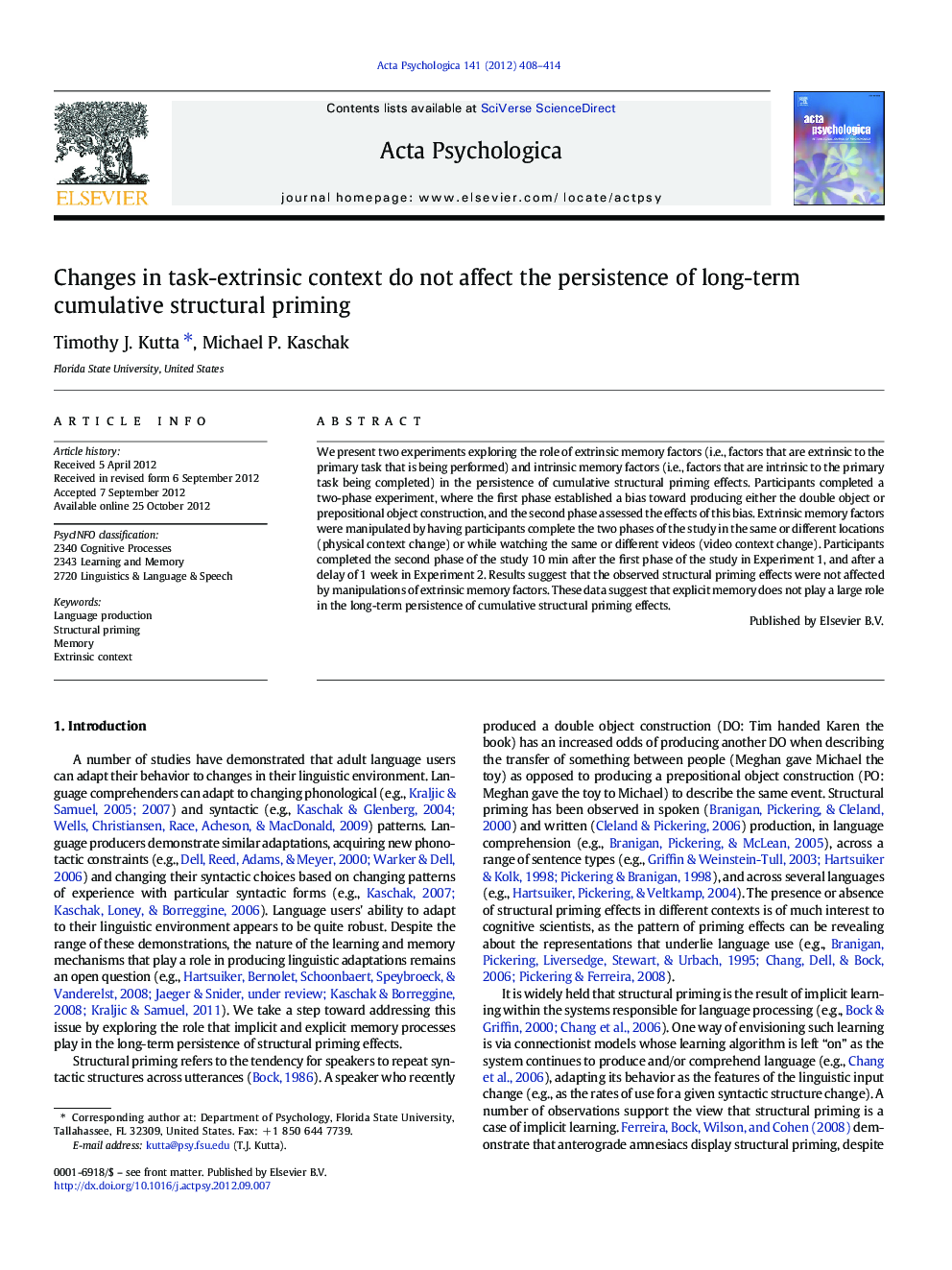| Article ID | Journal | Published Year | Pages | File Type |
|---|---|---|---|---|
| 919964 | Acta Psychologica | 2012 | 7 Pages |
We present two experiments exploring the role of extrinsic memory factors (i.e., factors that are extrinsic to the primary task that is being performed) and intrinsic memory factors (i.e., factors that are intrinsic to the primary task being completed) in the persistence of cumulative structural priming effects. Participants completed a two-phase experiment, where the first phase established a bias toward producing either the double object or prepositional object construction, and the second phase assessed the effects of this bias. Extrinsic memory factors were manipulated by having participants complete the two phases of the study in the same or different locations (physical context change) or while watching the same or different videos (video context change). Participants completed the second phase of the study 10 min after the first phase of the study in Experiment 1, and after a delay of 1 week in Experiment 2. Results suggest that the observed structural priming effects were not affected by manipulations of extrinsic memory factors. These data suggest that explicit memory does not play a large role in the long-term persistence of cumulative structural priming effects.
► We assessed the persistence of the cumulative priming effect following a delay of ten min vs. a week. ► We manipulated the match/mismatch of the physical setting and a virtual setting after the delay. ► The analysis indicated that neither source of extrinsic context had a significant effect. ► This result was replicated across both time delays. ► We conclude that explicit memory processes do not significantly contribute to the priming effect.
